Sea Turtles
Introduction to Sea Turtles
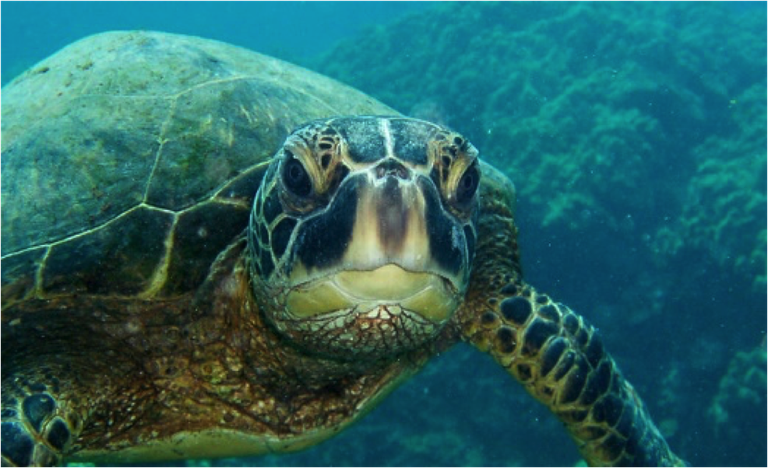
For more than 100 million years, sea (marine) turtles have migrated the oceans helping keep balance within marine ecosystems, from the sea grass beds off the coast of India to the sandy beaches of Eastern North America. Three of the seven sea turtle species are critically endangered while the other four are threatened or endangered. Read about the International Union for Conservation of Nature's (IUCN) red list assessment of sea turtle criteria and status.
Sea turtles are reptiles. All reptiles are exothermic, meaning they rely on external sources of heat. Mammals are endothermic. When outside temperatures drop below 50 degrees, a sea turtle’s heart rate decreases, as does its blood circulation. This causes the turtles to become lethargic and may lead to serious health problems such as shock, pneumonia, frostbite, and potentially death. Rescue organizations in North America and the world help these turtles at their facilities.
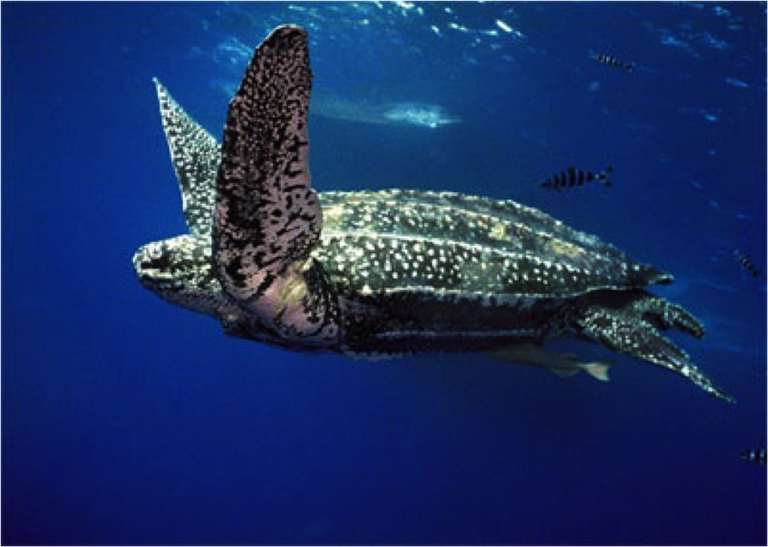
Sea turtles are aquatic reptiles, which means they spend the majority of their lives in the ocean. Females come ashore to lay their eggs, frequently just several yards from their previous nesting site. Read more about courtship and nesting. As they spend most of their lives at sea, their bodies are specially adapted. Their legs are flippers that effortlessly propel them through the water and they possess a streamlined shell. Sea turtles are unable to retract their legs and head into the shell like their land-dwelling relatives. Sea turtles also have a special gland next to their eyes, which expels excess saltwater. Many people say the turtles are crying!
Sea turtles breathe air just as we do so they must sometimes surface to take a breath. Turtles can hold their breath for 4-7 hours while resting. While searching for food, their breath-holding abilities allow them to dive to depths of nearly 1,000 feet! The leatherback turtle is even more extraordinary in its diving abilities: it can dive up to 3,000 feet below the ocean’s surface!
Sea Turtles at the ABQ BioPark
The ABQ BioPark is home to two sea turtles: Jimmy the hawksbill and Mimi the loggerhead. Both turtles are non-releasable, meaning they wouldn’t be able to survive in the wild on their own.
Mimi came to the BioPark from the New England Aquarium in Boston after being rescued and treated for cold shock. She was missing one eye when she first arrived. She is approximately 35 years old. Below: Mimi at the Aquarium. Photo: ABQ BioPark.
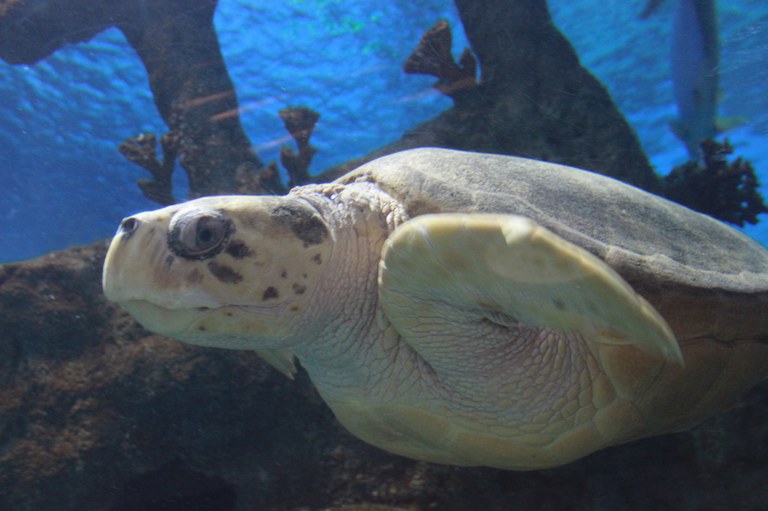
Jimmy was found as a hatchling in October 1997 on the shores of Fort Aransas, Texas. He was dehydrated and quite thin (turtles get thin too!) so staff at the University of Texas Marine Science Institute took him in. Jimmy grew stronger and larger but it was determined that he was not releasable. In September 1999, Jimmy arrived at the BioPark and has been inspiring visitors since! Below: Jimmy at the Aquarium. Photo: ABQ BioPark.
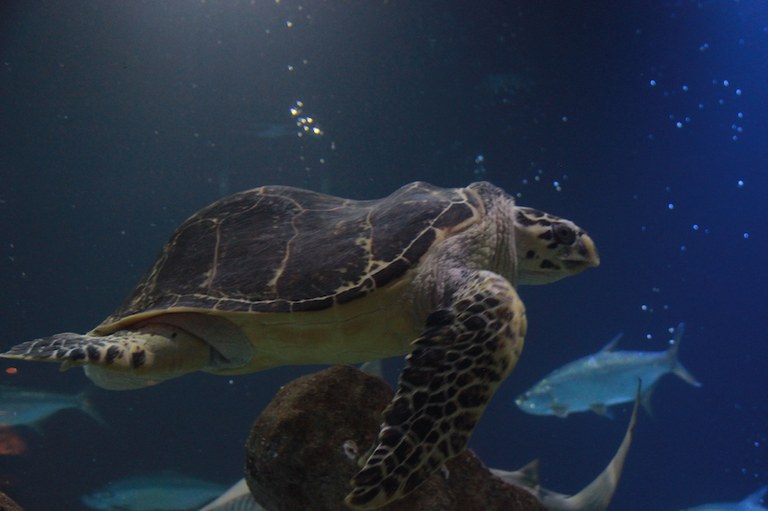
Conservation
Sea turtles face many hurdles for survival. We have the ability to make a difference, even while living in a land-locked state!
Human activities, from over-fishing to habitat alteration and destruction, have contributed to the decline of these wonderous creatures. Human efforts are more important than ever to keep sea turtle populations thriving.
Aquariums around the country and world are working to educate everyone about the amazing lives sea turtles lead. Many organizations work to rescue, rehabilitate and release sick and injured turtles. When sea turtles hatch later in the season (late September-October), their chances of survival decrease significantly. This is due to the cooler water temperatures, which can negatively affect sea turtles.
In October 2017, the BioPark Aquarium fostered a baby loggerhead sea turtle originally rescued by staff at the North Carolina Aquarium at Pine Knoll Shores. When Shelldon first arrived at ABQ Aquarium, he or she (we don’t know if the turtle is a boy or girl) weighed a mere 35 grams. A single nickel weighs 5 grams, so the baby turtle weighed about the same as seven nickels. Below: Shelldon the rescue sea turtle came to the ABQ BioPark in 2017. Photo: Andrew Montoya for the ABQ BioPark.
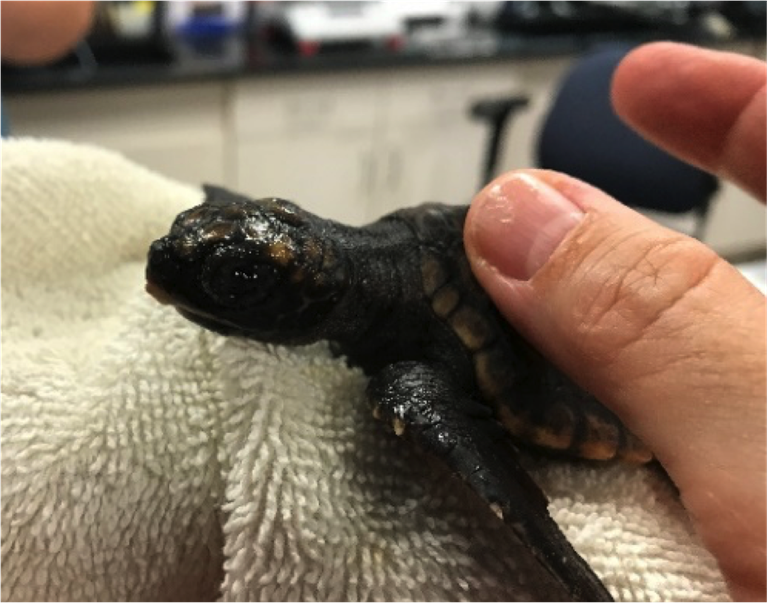
When ABQ staff flew Shelldon back to North Carolina for release a year later, he/she weighed a bit over 9 kilograms, which is 20 pounds! At this size, Shelldon had a much better chance of survival, adding to the loggerhead breeding population.
Below: Shelldon (black bin on the left) was released back into the ocean in 2018. Photo: Andrew Montoya for the ABQ BioPark
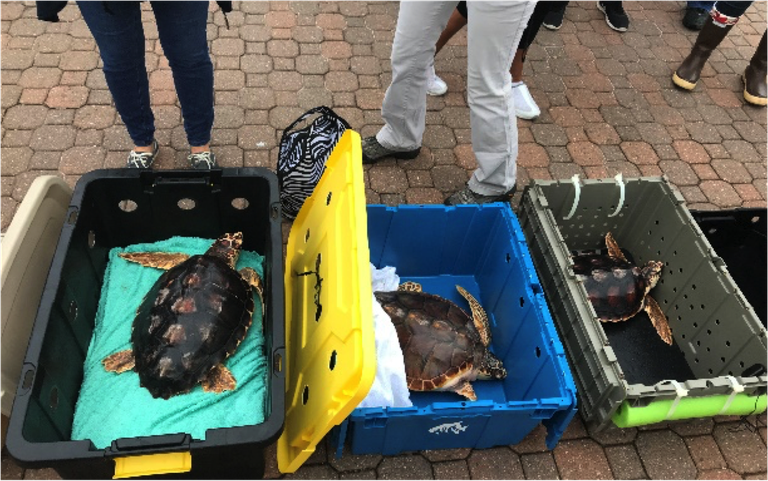
This sea turtle foster program was funded by several agencies including the US Fish and Wildlife Service. While this program is no longer operational, Albuquerque residents and visitors to the Aquarium were delighted to get to know Shelldon during the year we cared for him/her.
Anyone can make a difference! Follow these simple steps to help protect sea turtles and their habitats:
- Traveling to the beach? Read these helpful tips from NOAA to protect turtle habitat.
- Reduce your plastic use at home. Use a refillable water bottle and a reusable bag at the store. Sea turtles can mistake plastic as a tasty meal, which may be harmful or fatal.
- Tie those helium filled balloons securely! Balloons can travel great distances and harm birds and sea life.
- Help spread the word about the wonderful world of sea turtles.
Together we can make a positive difference for all life!
Activity: Tissue Paper and Paper Plate Turtle Craft
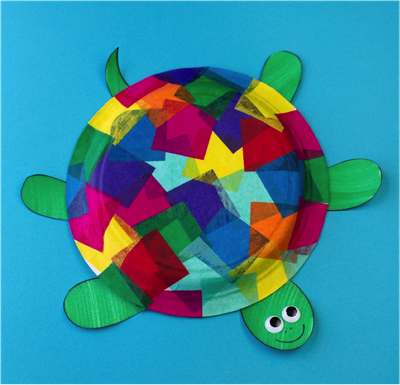
Supplies
To make this paper plate turtle craft, you will need:
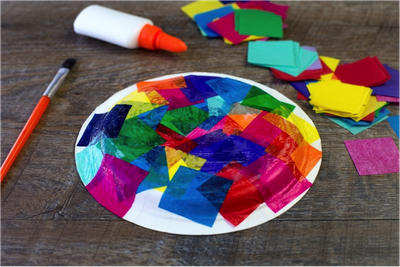
- Paper plate turtle template
- Tissue paper (cut into 1-inch squares)
- White school glue
- Wiggly/googly eyes
- Scissors
- Green marker (or other color if you choose!)
- Paper plates
- Paintbrush
- Glitter (optional) – please ask an adult before using!
- Tape – double sided if possible
- Black marker
Once you have gathered all the supplies, it’s time to get started!
Step 1:
Cover the bottom of your paper plate with glue, using your paint brush.
Step 2:
Place the tissue paper squares on the plate; you choose the design. Use your paint brush to firmly secure the tissue paper. Add a little bit of glue to the paint brush if needed. If any tissue paper hangs over the edge of the plate, fold it under the edge.
Step 3: (Optional)
Add glitter over top of the tissue paper while the glue is still wet.
Step 4:
Color and cut out your turtle template.
Step 5:
Attach googly eyes to the turtle head. Draw the mouth and nose with a black marker.
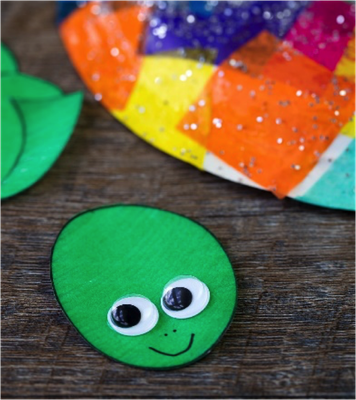
Step 6:
Attach legs, tail and the head to paper plate body with tape.
Finished!
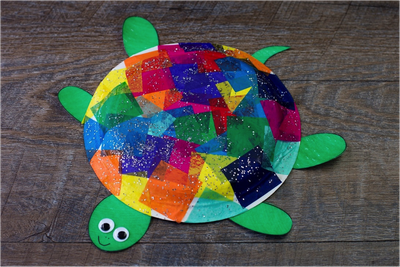
Additional Resources
- Live webcam at New England Aquarium Giant Ocean Tank.
- Meet the green turtle at the Monterey Bay Aquarium.
- Turtle: The Incredible Journey is a documentary film about the journey from birth to breeding for one loggerhead sea turtle. Rated G.
- Read all about sea turtle diets with SeaWorld.
- General sea turtle information from the Smithsonian.
